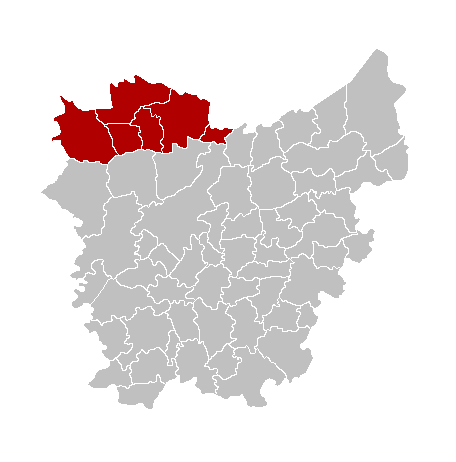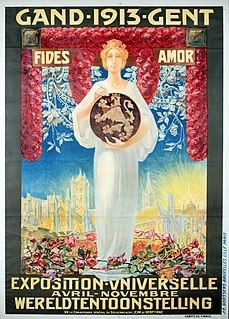
Henri La Fontaine, was a Belgian international lawyer and president of the International Peace Bureau. He received the Nobel Prize for Peace in 1913 because " he was the effective leader of the peace movement in Europe".

Victor Pierre Horta was a Belgian architect and designer. John Julius Norwich described him as "undoubtedly the key European Art Nouveau architect." Horta is considered one of the most important names in Art Nouveau architecture. With the construction of his Hôtel Tassel in Brussels in 1892-3, he is sometimes credited as the first to introduce the style to architecture from the decorative arts. The "biomorphic whiplash" style that Horta promoted deeply influenced architect Hector Guimard who used it in projects in France and extended its influence abroad.
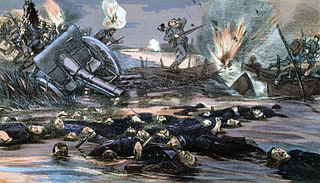
The Battle of the Yser was a battle of World War I that took place in October 1914 between the towns on Nieuwpoort and Diksmuide, along a 35-kilometre (22 mi) stretch of the Yser River and the Yperlee Canal, in Belgium. The front line was held by a large Belgian force, which halted the German advance in a costly defensive battle. The Allied victory at the Yser stopped the German advance into the last corner of unoccupied Belgium, but the German army was still left in control of 95 percent of Belgian territory.

Emile Vandervelde was a Belgian socialist politician. Nicknamed "the boss", Vandervelde was a leading figure in the Belgian Labour Party (POB–BWP) and in international socialism.
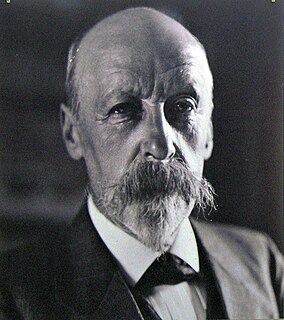
Emile Claus was a Belgian painter.

Frits Van den Berghe was a Belgian expressionist and surrealist painter and illustrator.
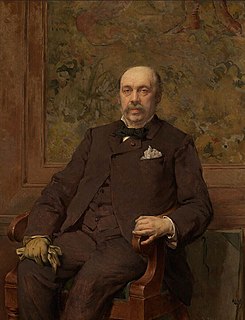
Jean-François Portaels or Jan Portaels was a Belgian painter of genre scenes, biblical stories, landscapes, portraits and orientalist subjects. He was also a teacher and director of the Academy of Fine Arts of Ghent and the Académie Royale des Beaux-Arts in Brussels. He is regarded as the founder of the Belgian Orientalist school. He was praised in his time as the premier painter of 'everyday elegance and feminine grace'. Through his art, teaching and his leadership of the Académie Royale in Brussels he exerted an important influence on the next generation of Belgian artists, including his pupil Théo van Rysselberghe.

Maurice Auguste Count Lippens was a noble Belgian businessman, politician, and colonial civil servant and lawyer.

Émile, Baron Braun was an engineer, Belgian liberal politician and manager of companies in the textile industry.
Paul Louis François Spaak was a Belgian lawyer, poet, literary historian, and playwright.
Alfred Théodore Joseph Bastien was a Belgian artist, academic, and soldier.

Jacques de Lalaing (1858–1917) was an Anglo-Belgian painter and sculptor, specializing in animals.
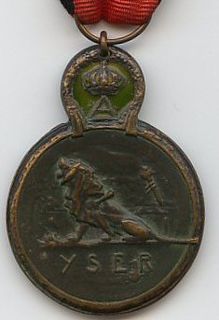
The Yser Medal was a Belgian campaign medal of World War I, established on 18 October 1918 to denote distinguished service during the 1914 Battle of the Yser in which the Belgian Army stopped the German advance of the German invasion of Belgium.
Paul Victor Antoine Struye was a Belgian lawyer, politician, and journalist, notable for his writings during World War II. A native of Ghent, Struye served in the Belgian Army during World War I. He qualified as a lawyer in the years after the war and also worked as a journalist at the Catholic newspaper La Libre Belgique. A royalist and patriot, Struye was soon attracted to the Belgian resistance during World War II and was influential once La Libre Belgique became an underground newspaper. His diary of life under occupation and writings on public opinion are important historical sources on the period. After the war, Struye entered politics in the Christian Social Party as a senator and held the portfolio of Minister of Justice (1947-1948). He subsequently held the post of President of the Senate on two occasions.

Émile Dossin de Saint-Georges, born Émile Jean Henri Dossin, was a Belgian Lieutenant-General and one of the foremost Belgian generals of World War I. Made Baron of Sint-Joris, a notable barracks at Mechelen was named in his honour in 1936.

Albert Baertsoen was a Belgian painter, pastellist and graphic artist.

Honoré Jozef Coppieters was a Belgian prelate who became, in 1927, the Bishop of Ghent.
Émile Alphonse Louis Merlin was a Belgian mathematician and astronomer.



